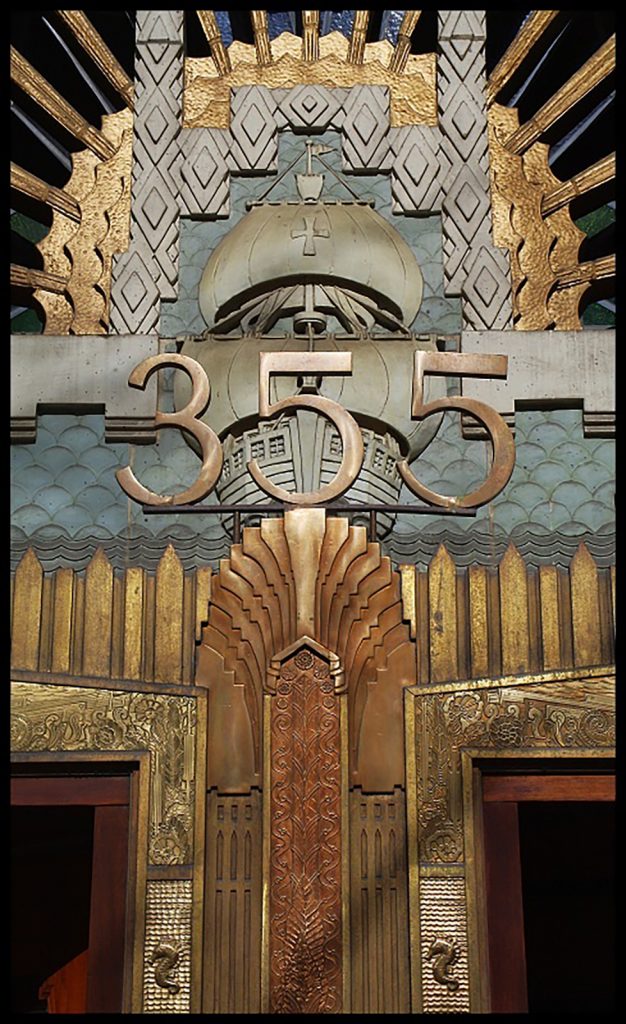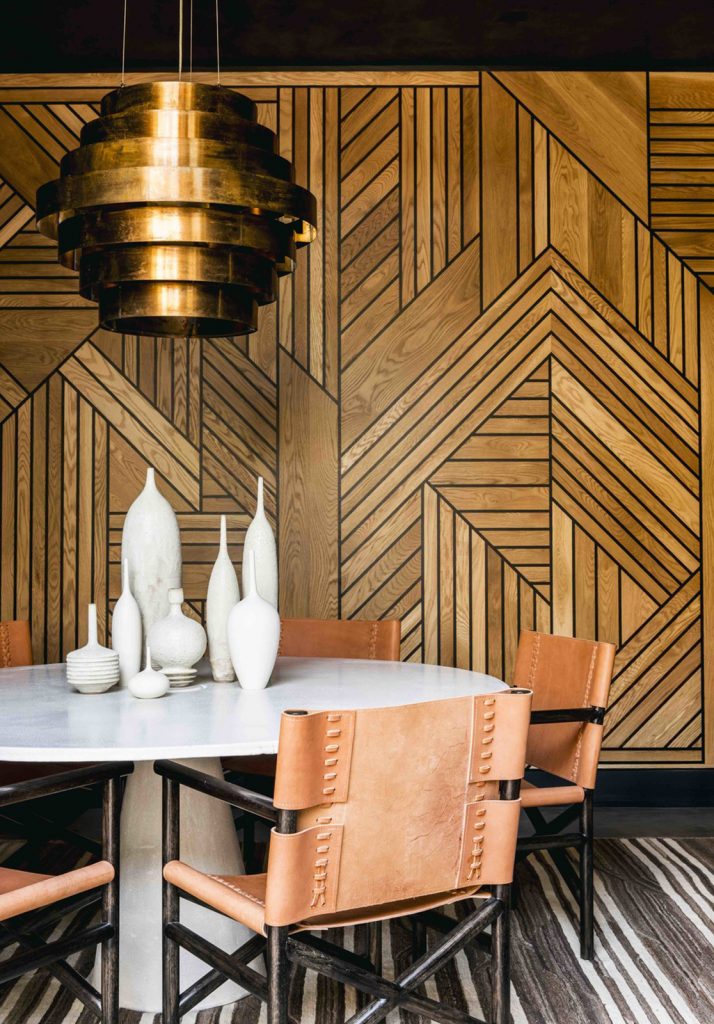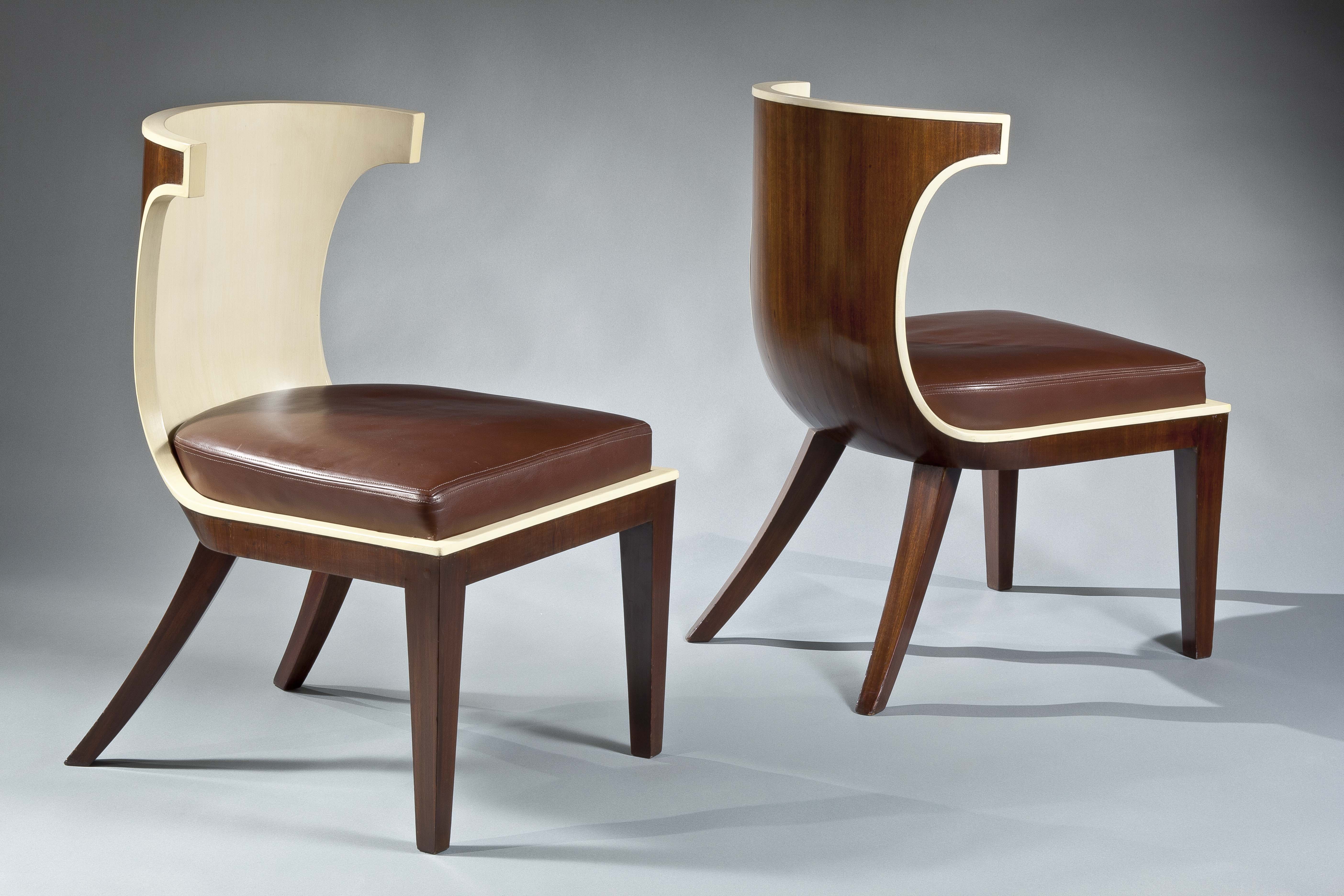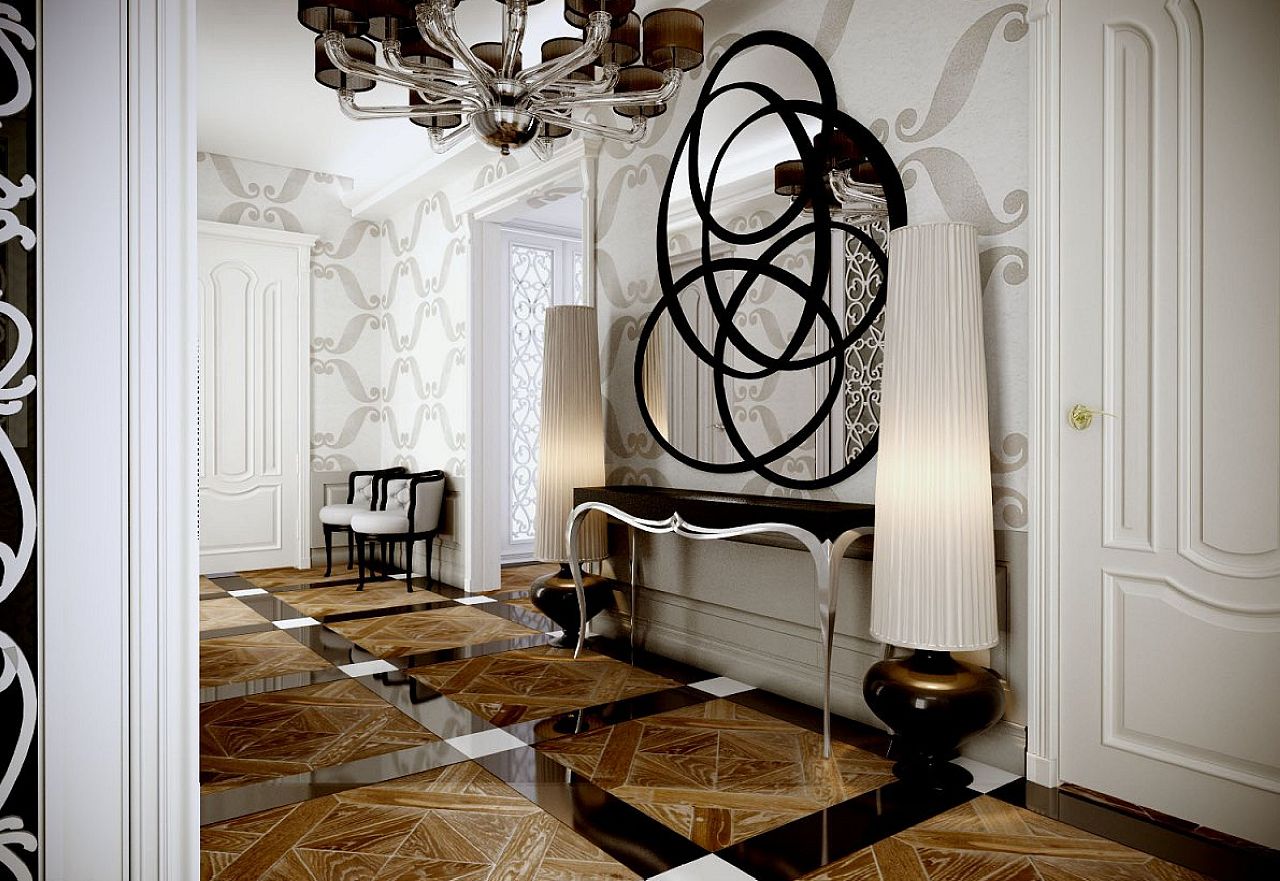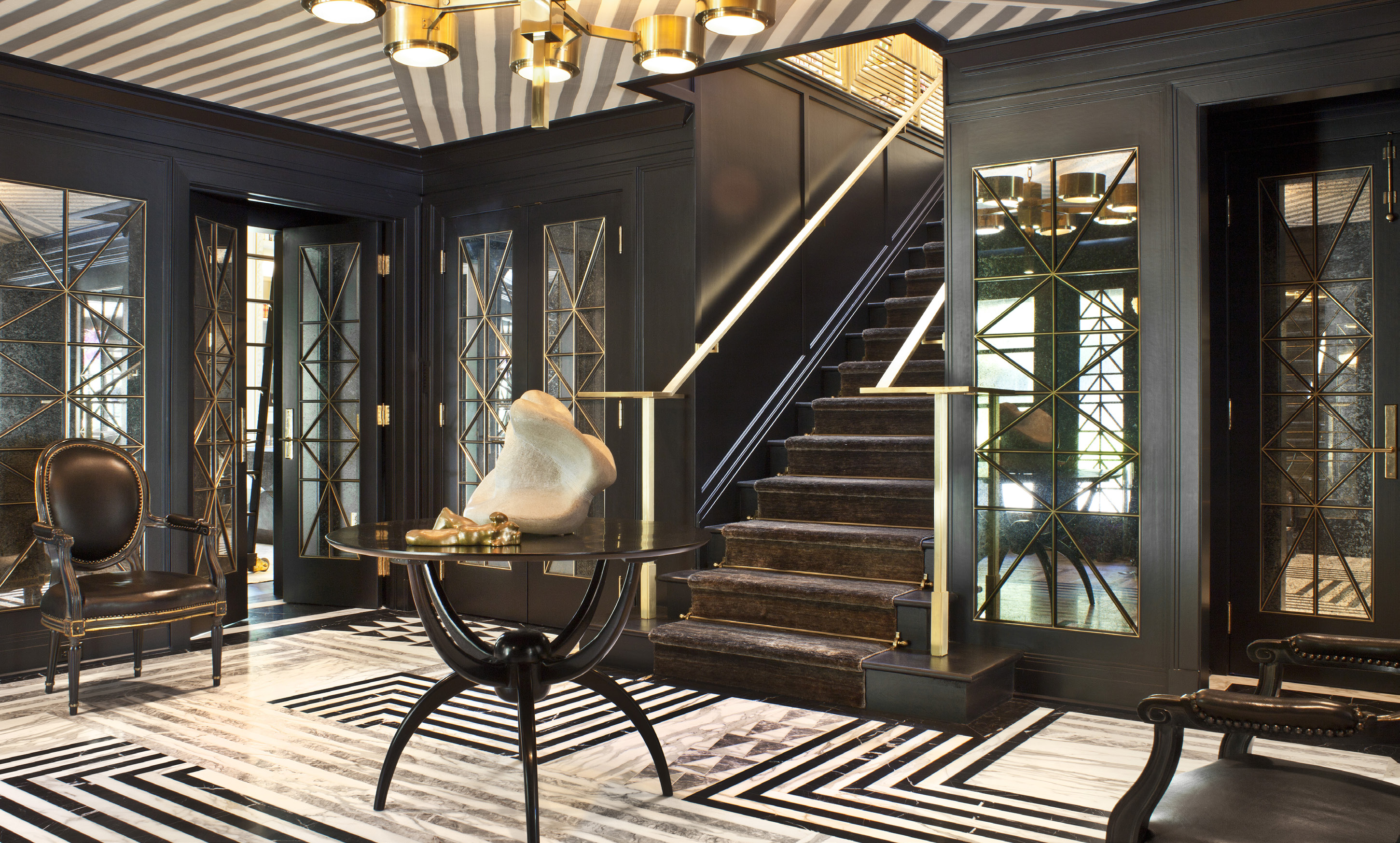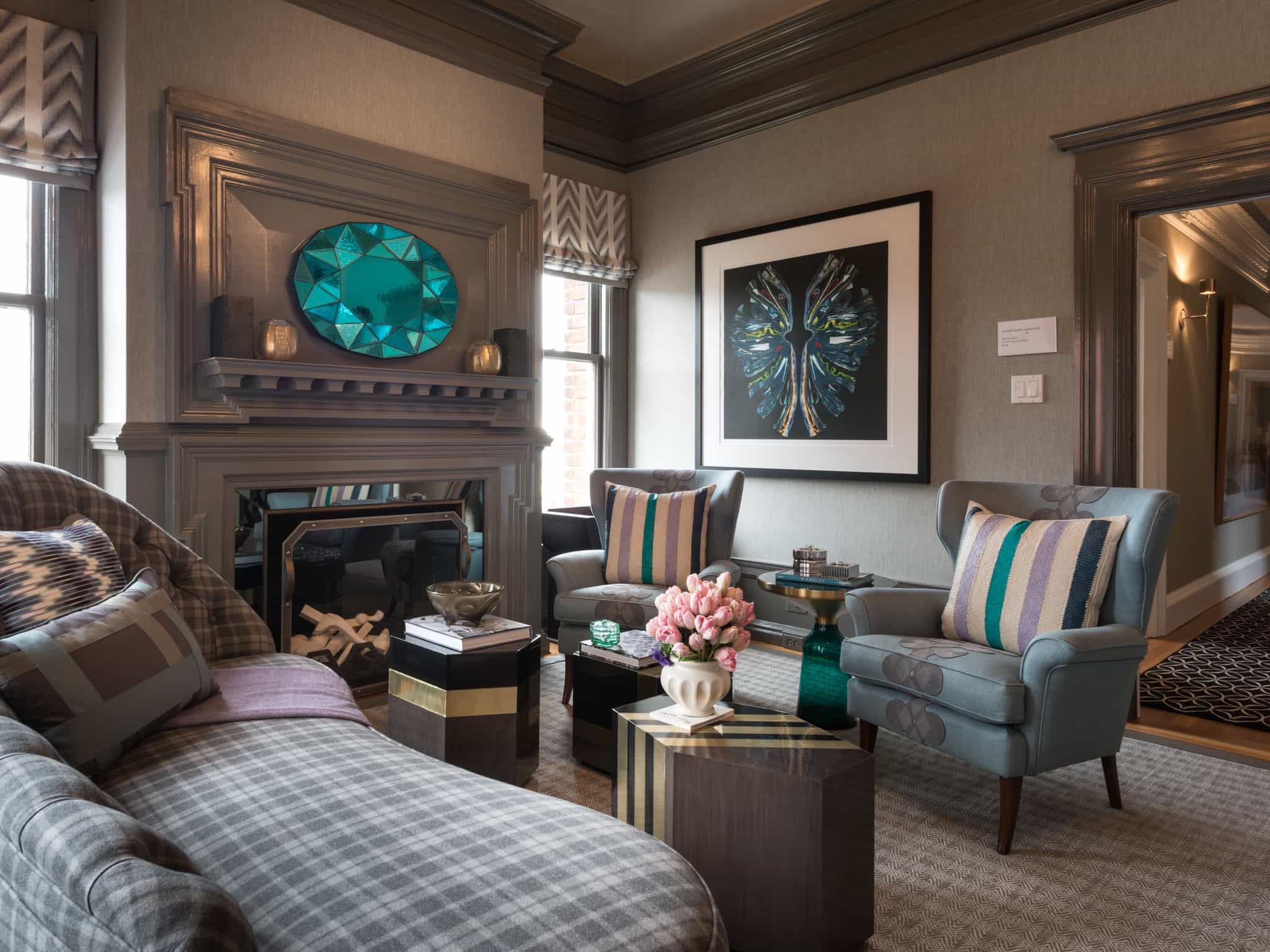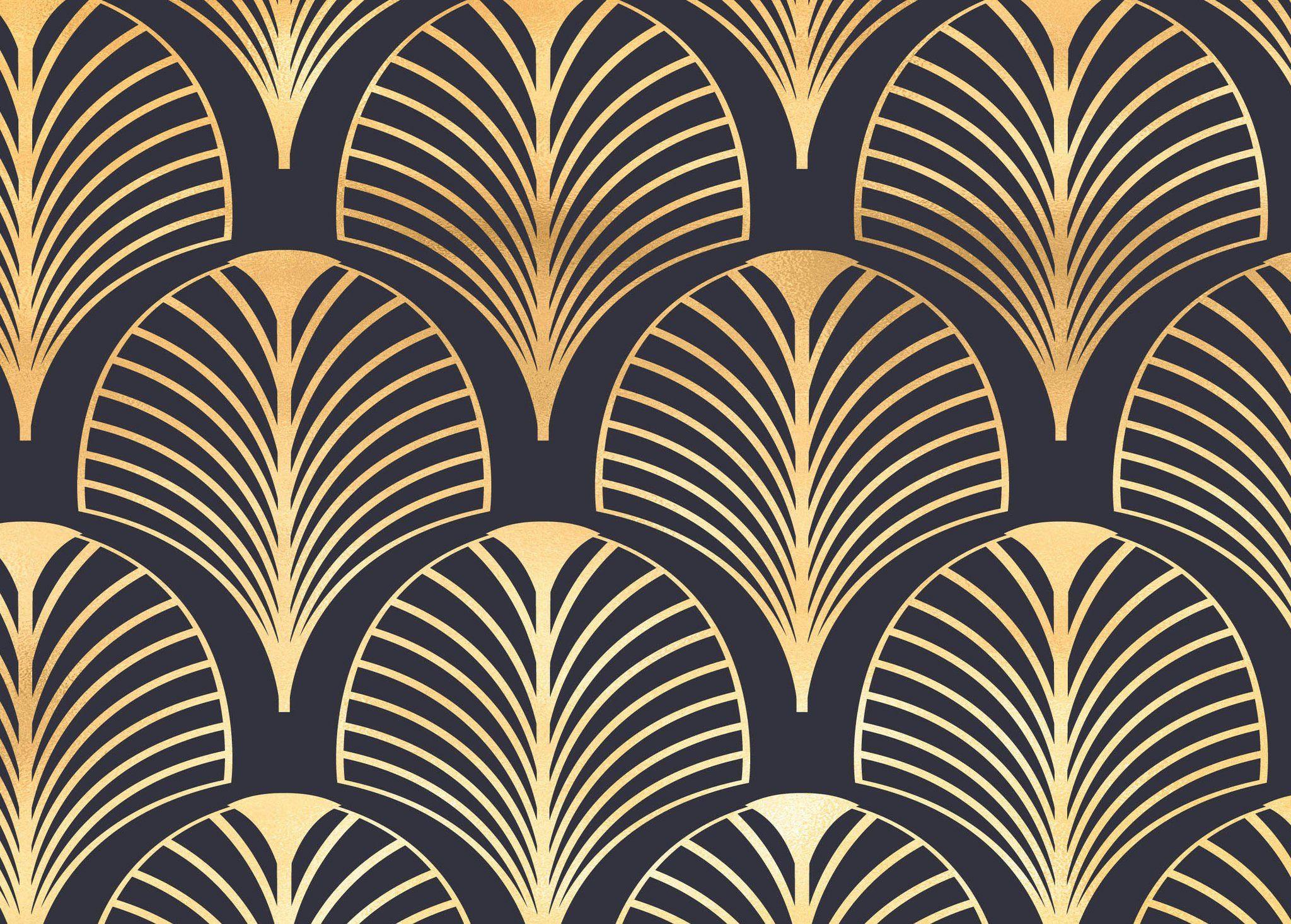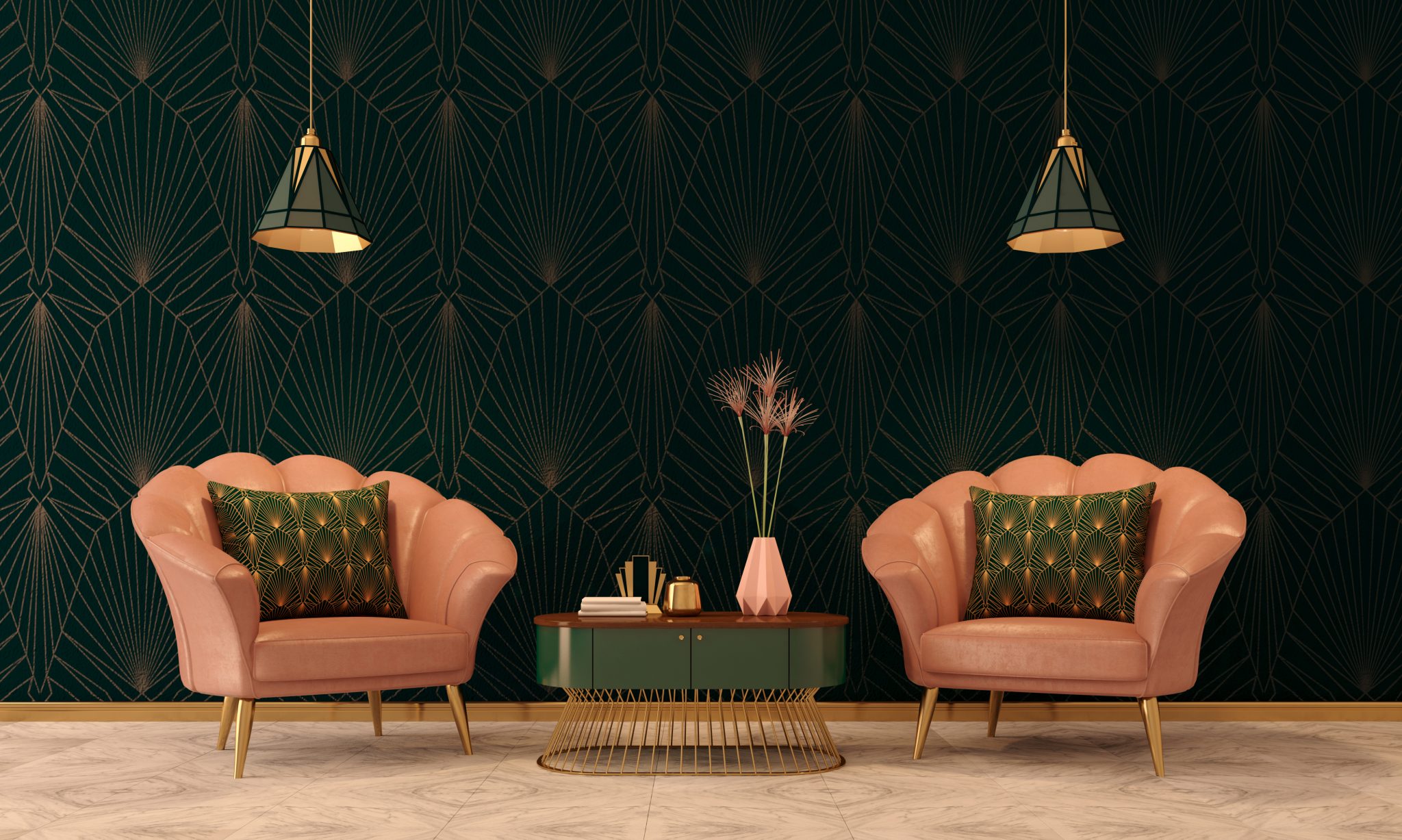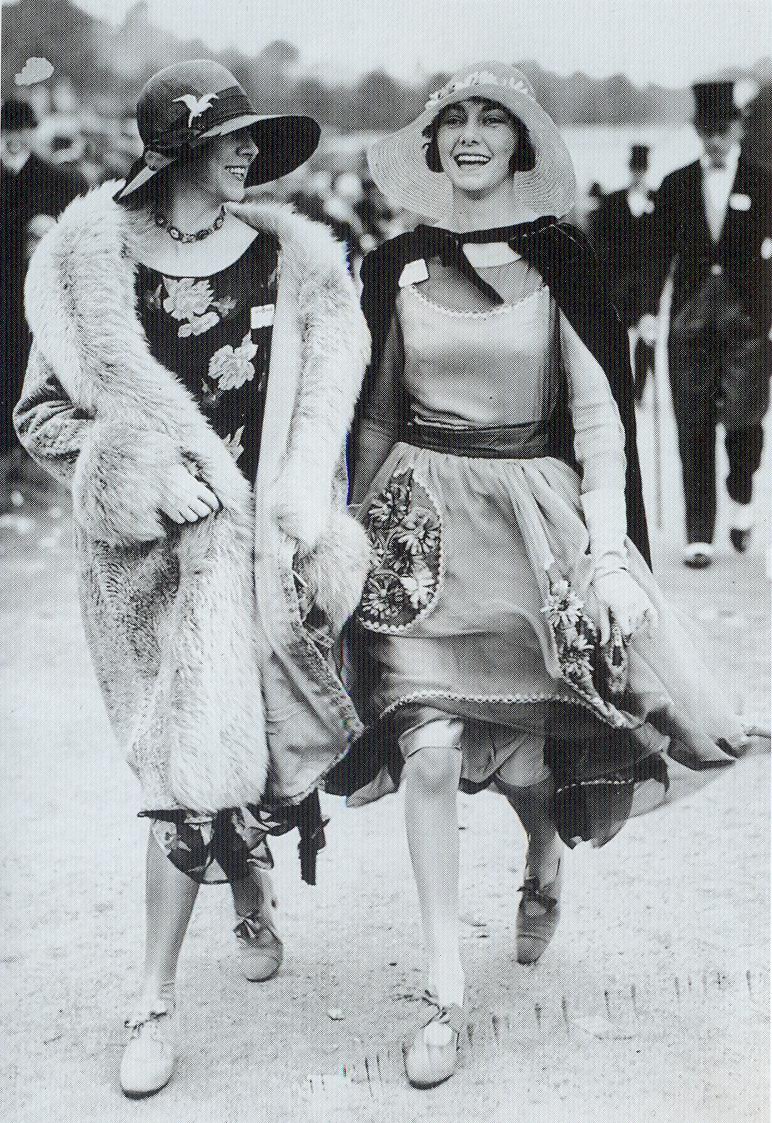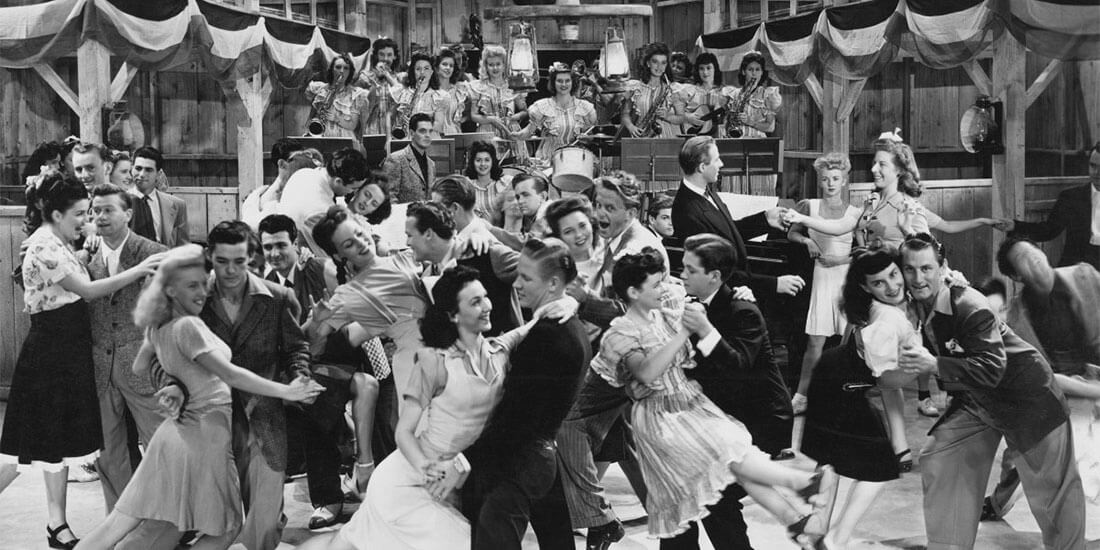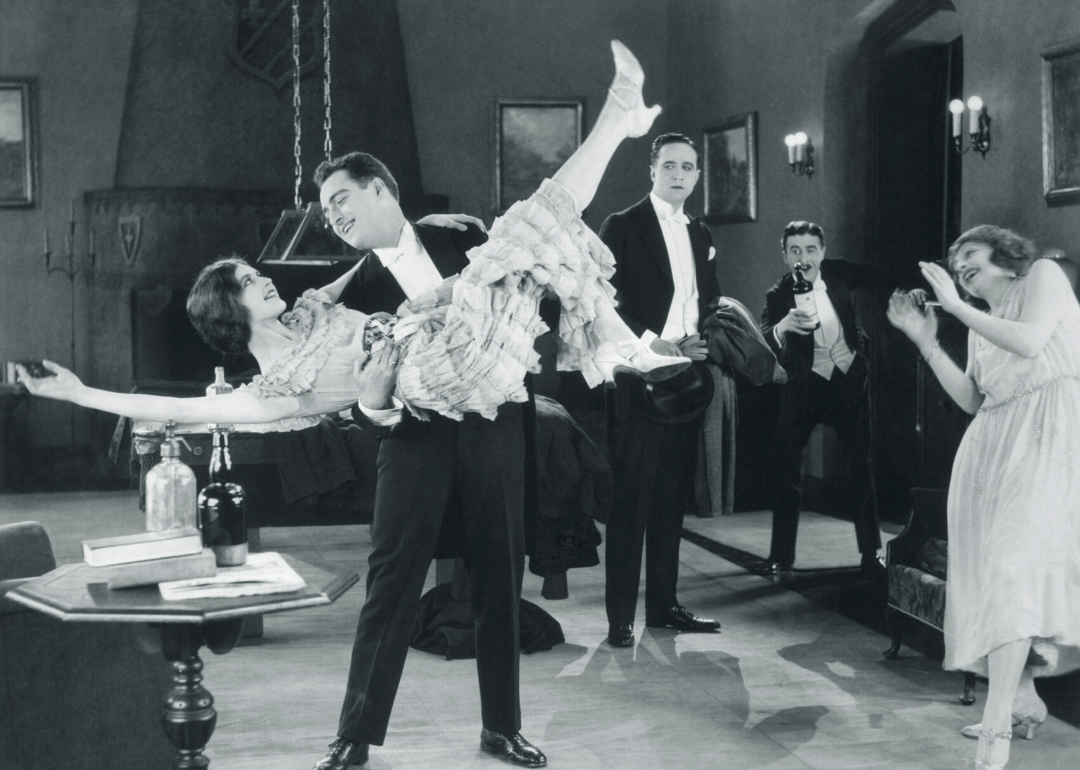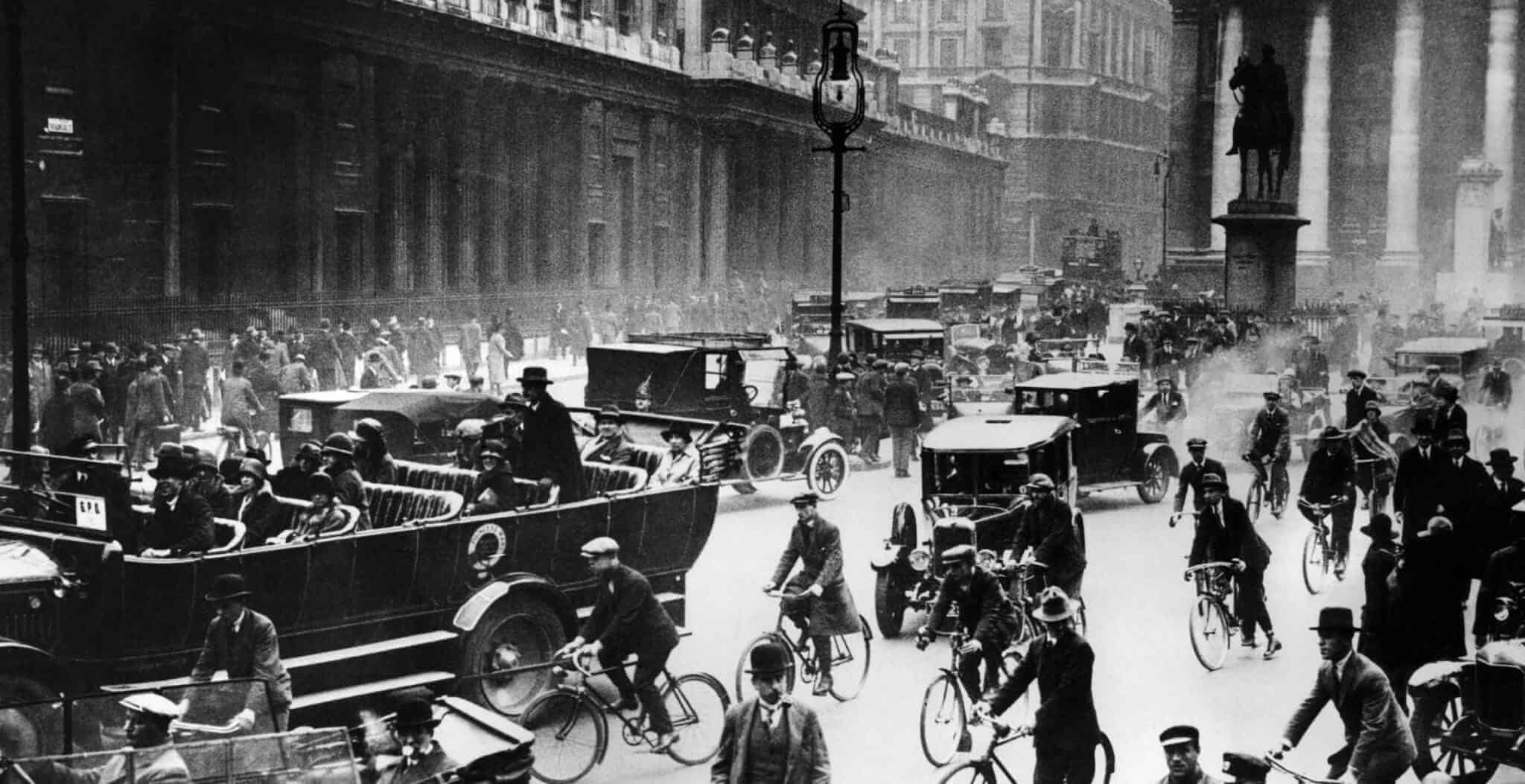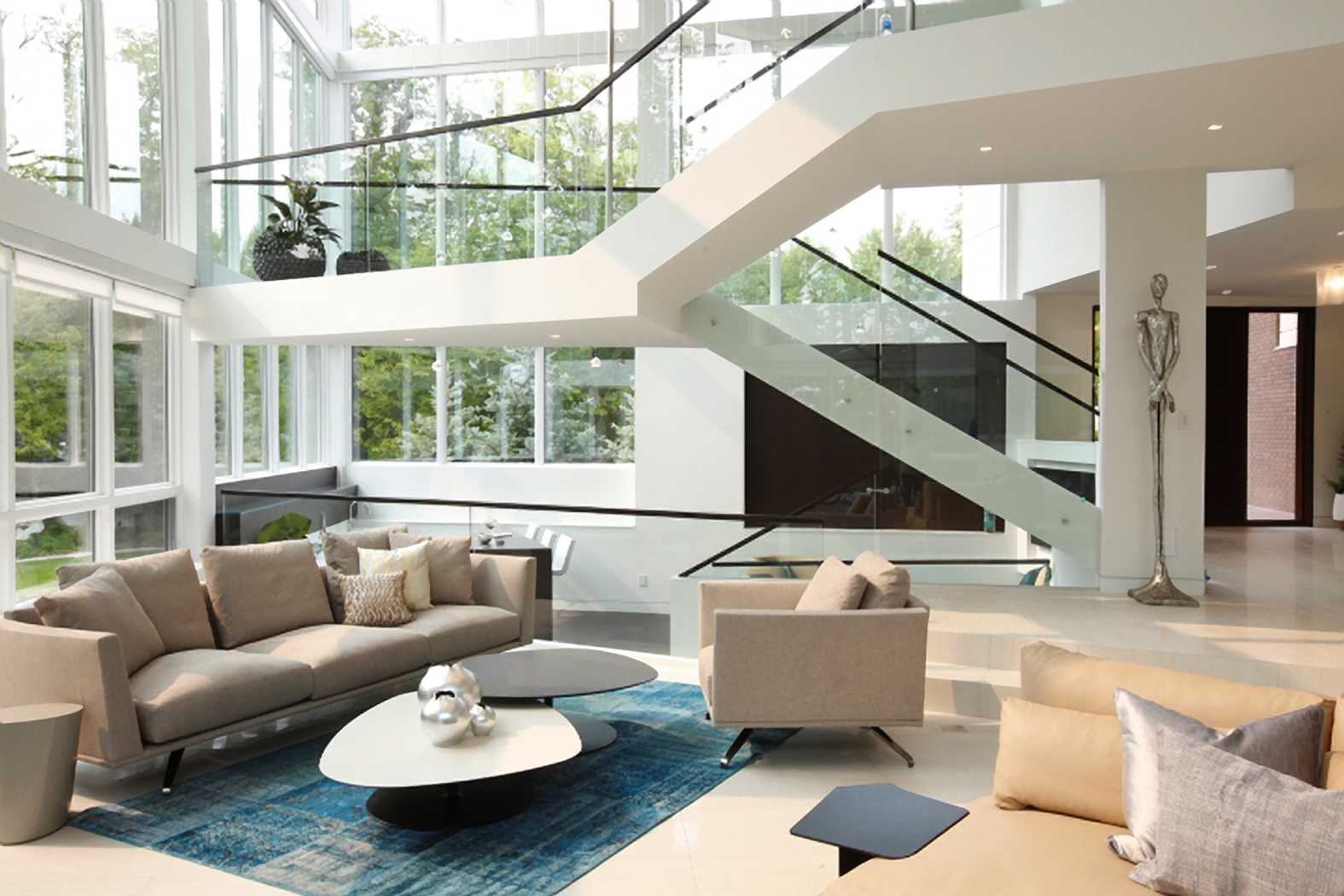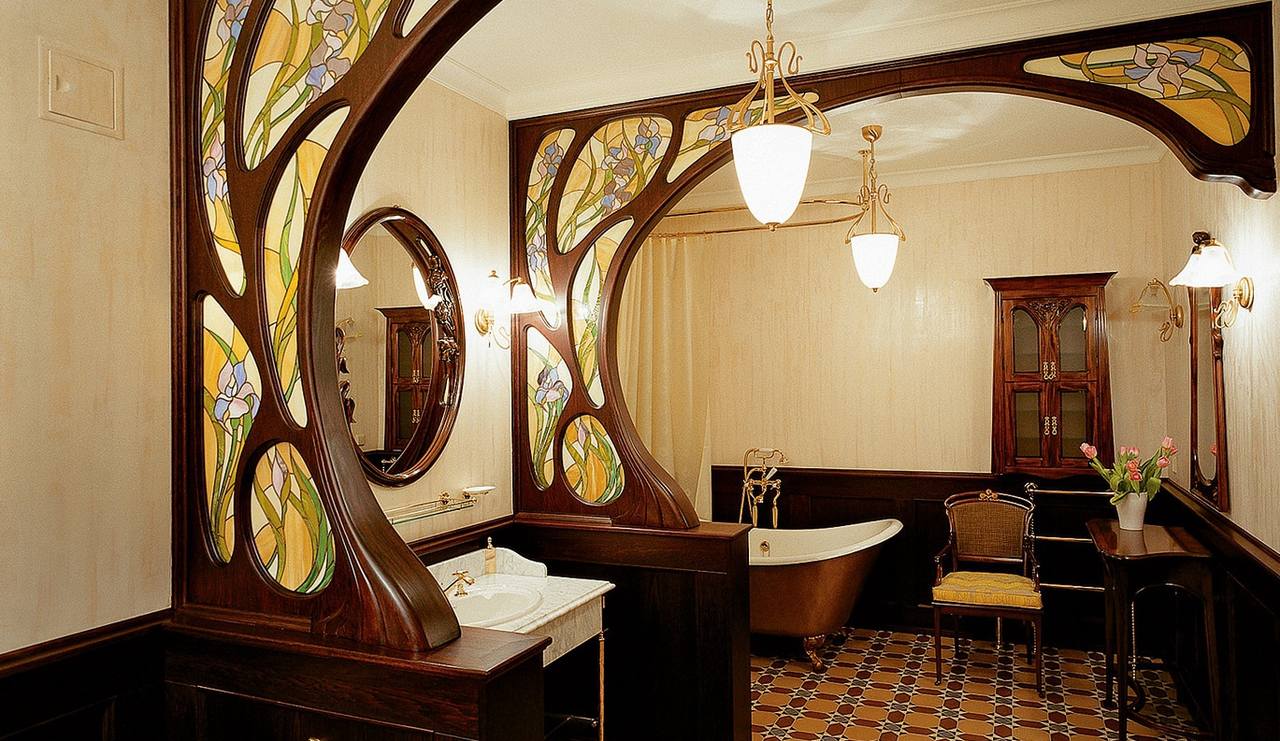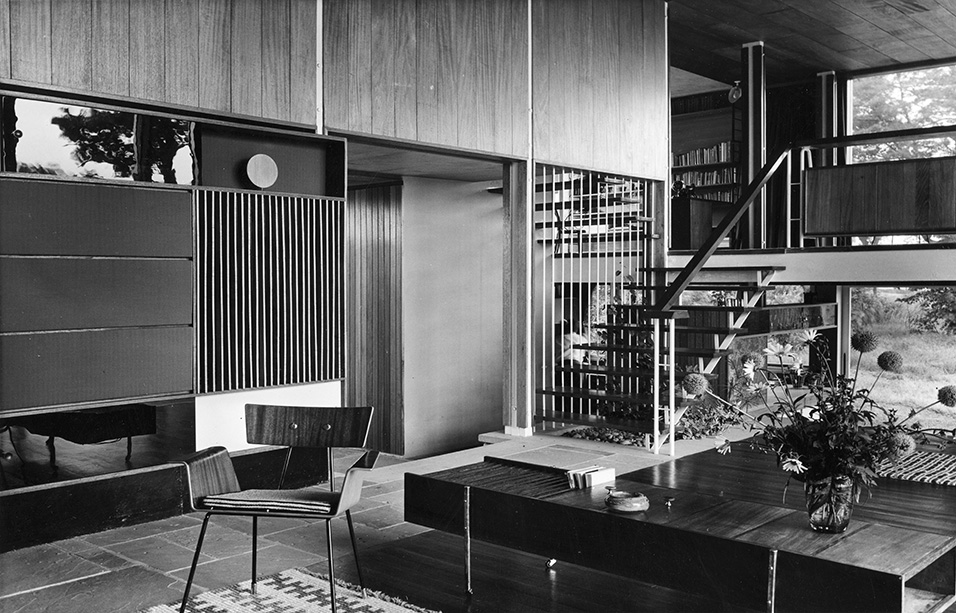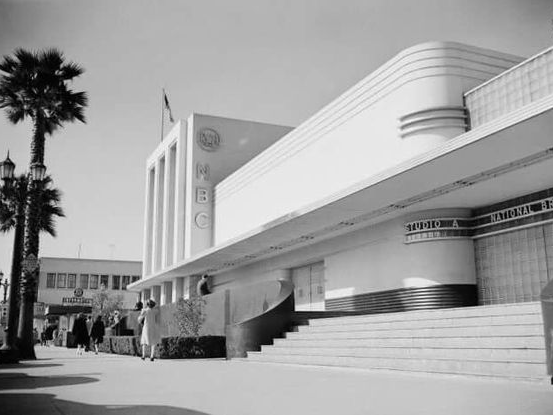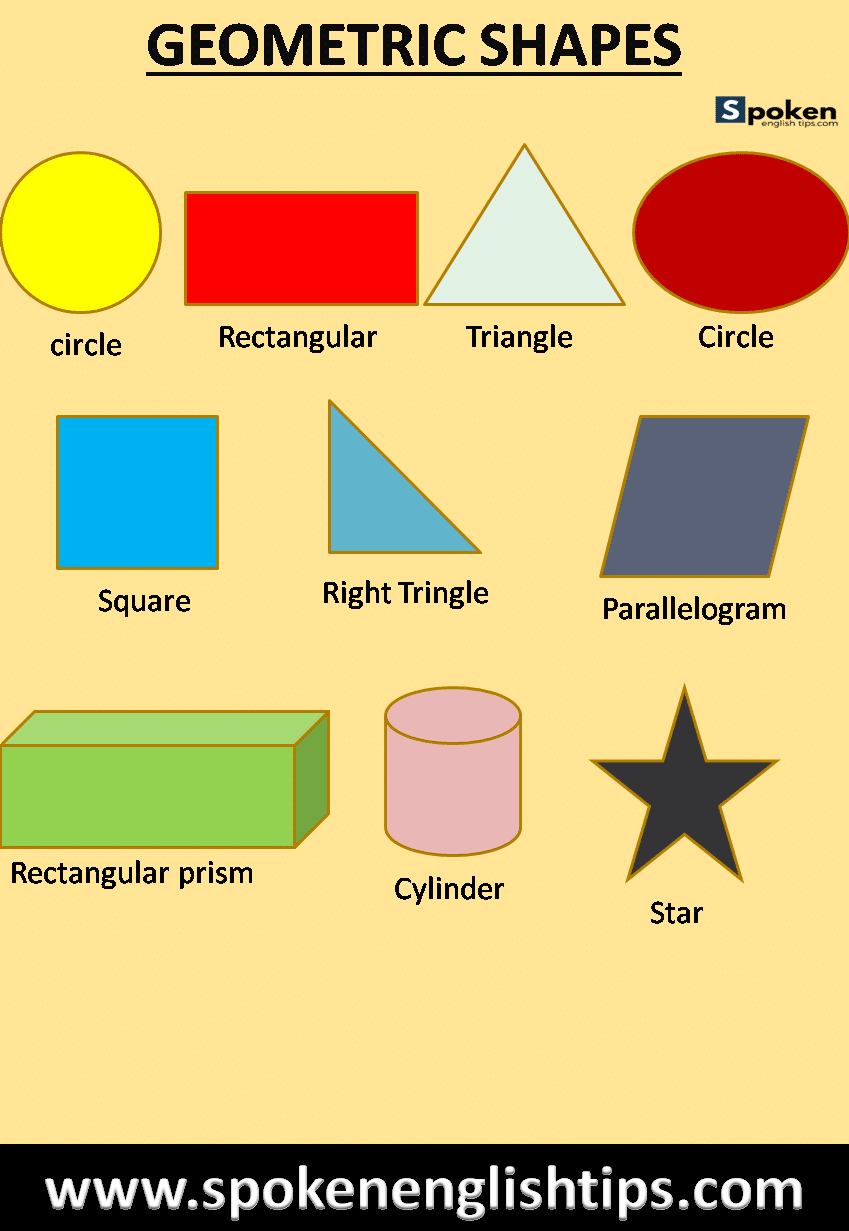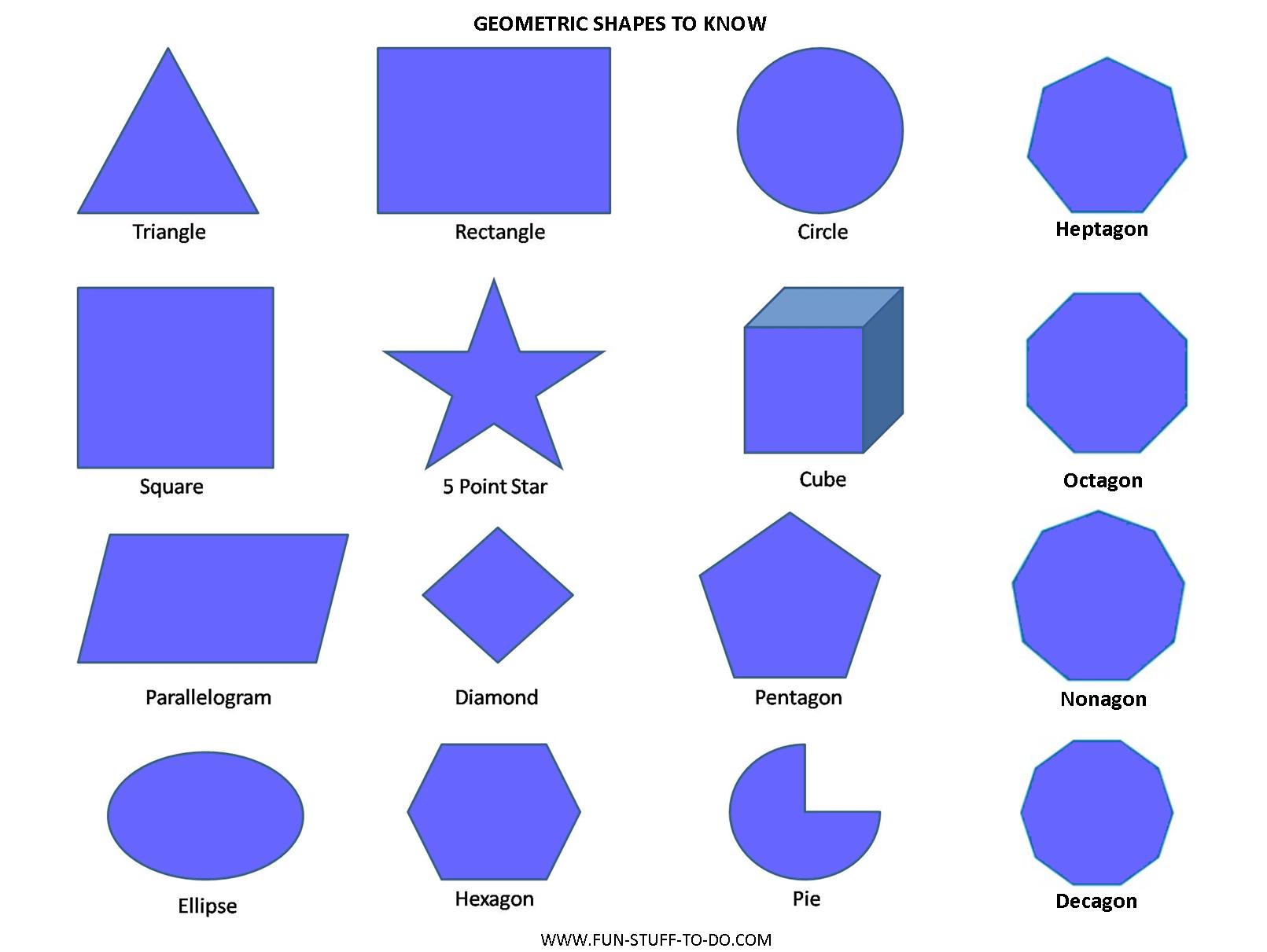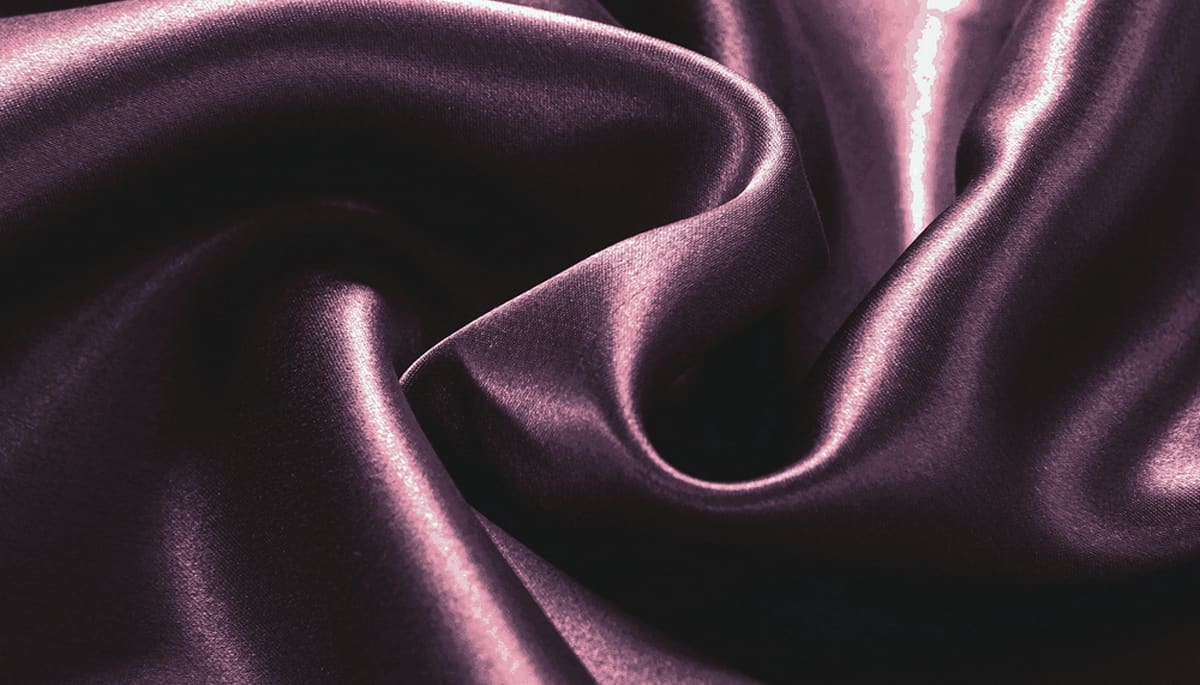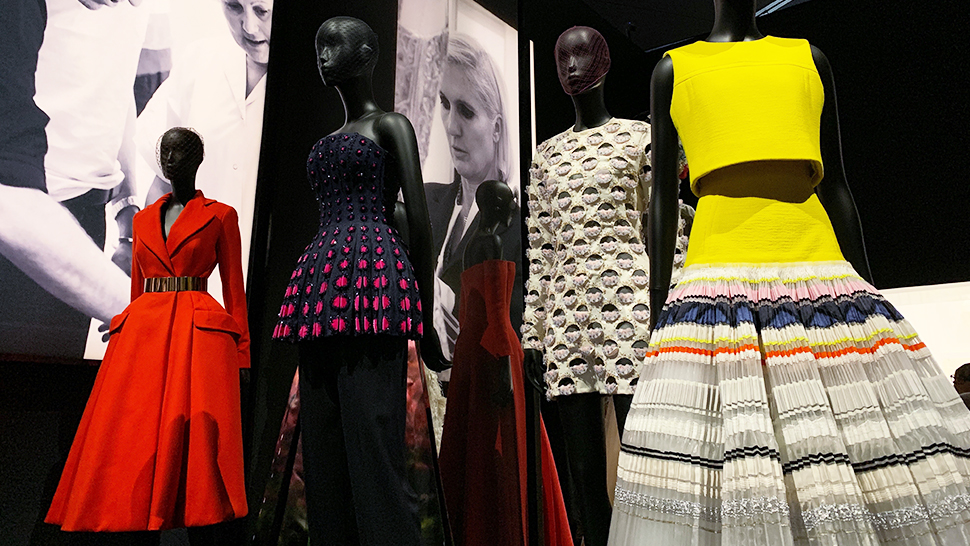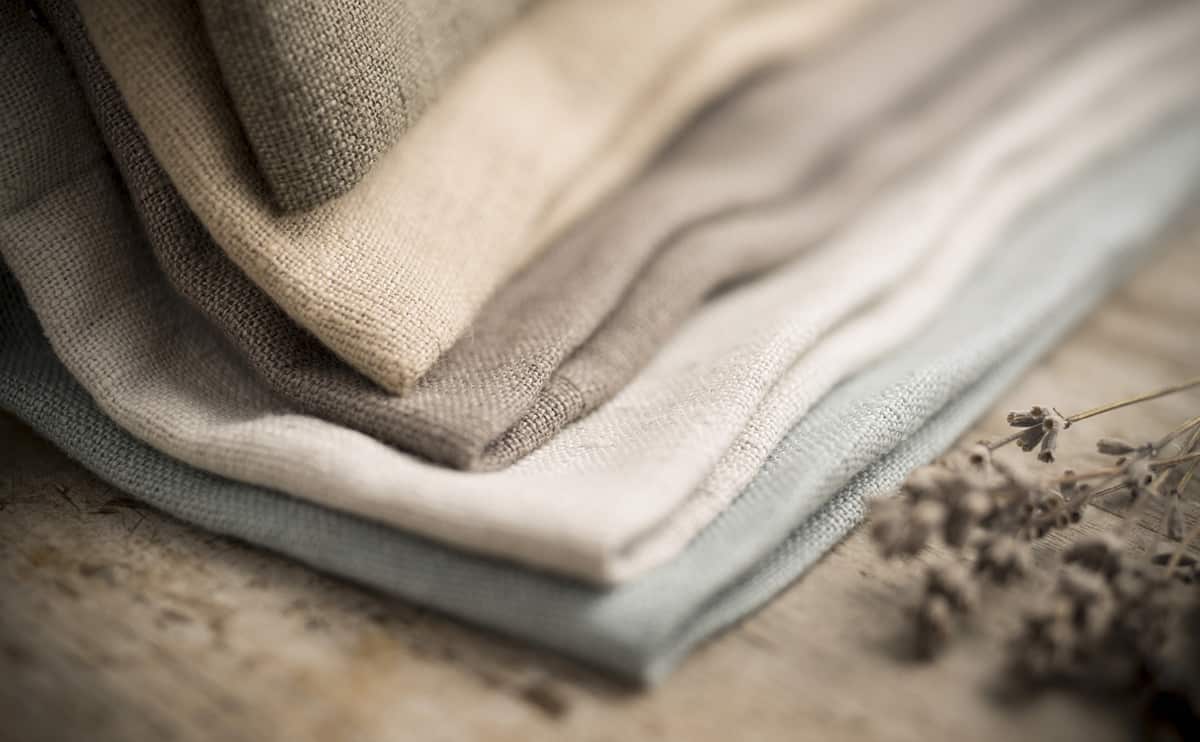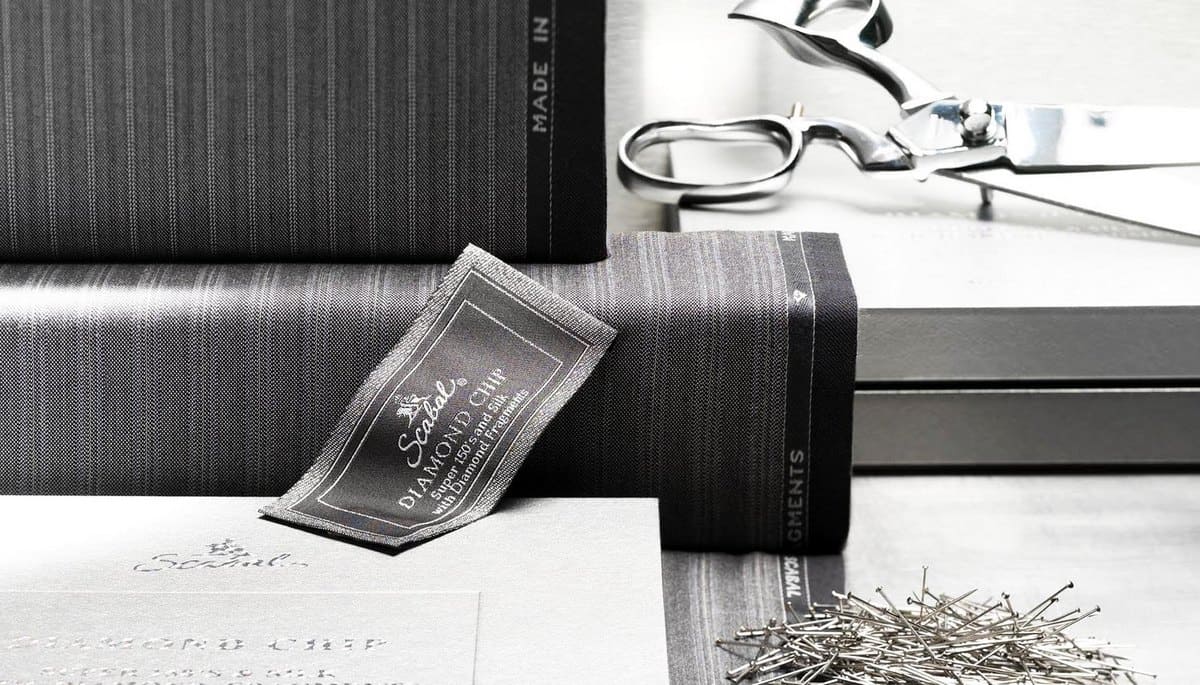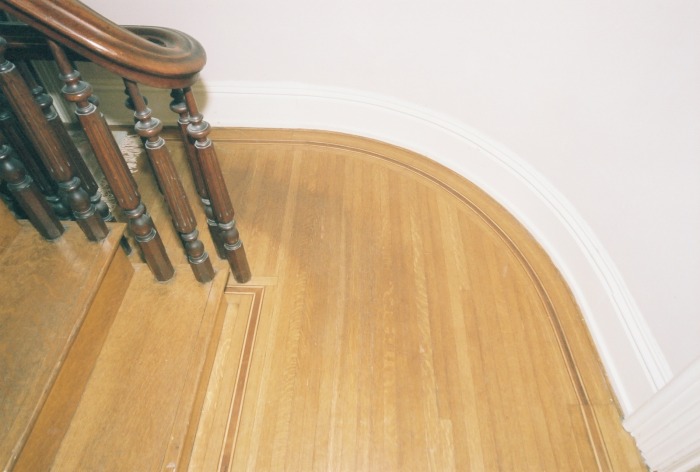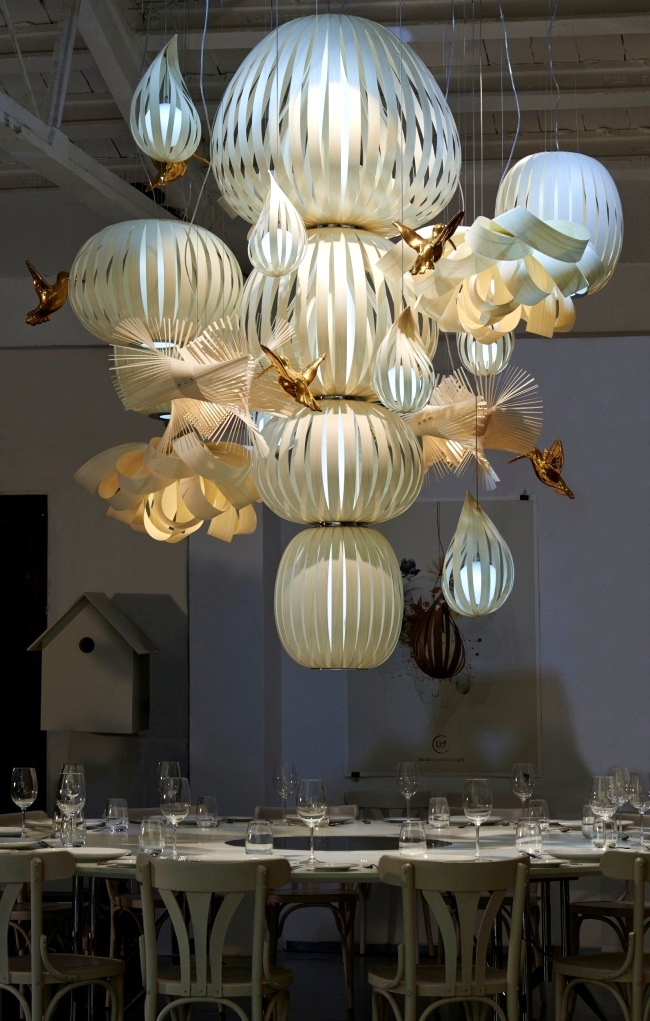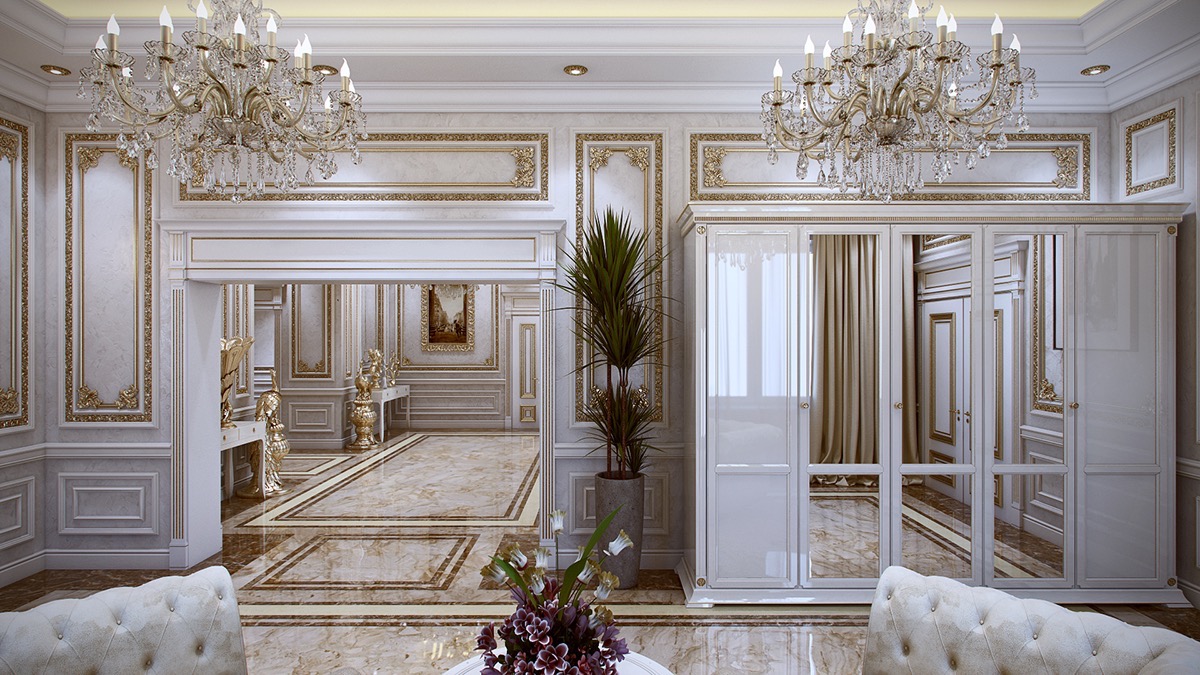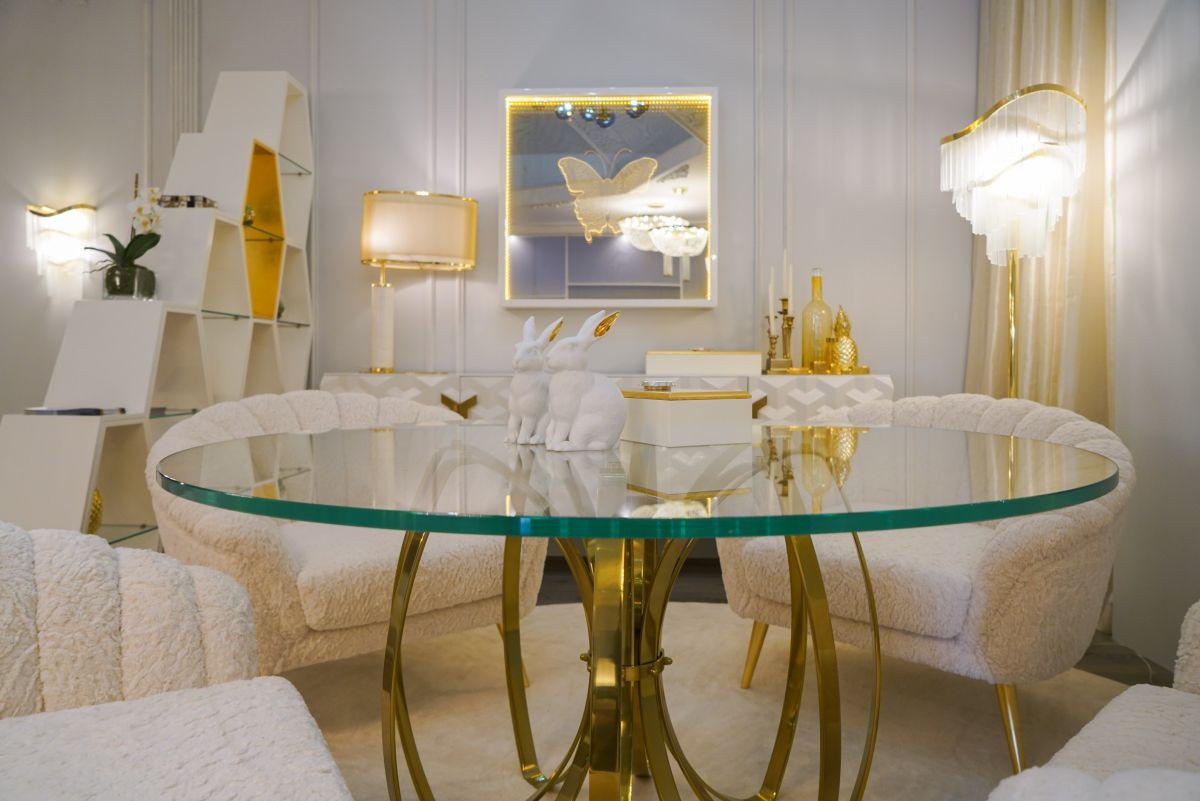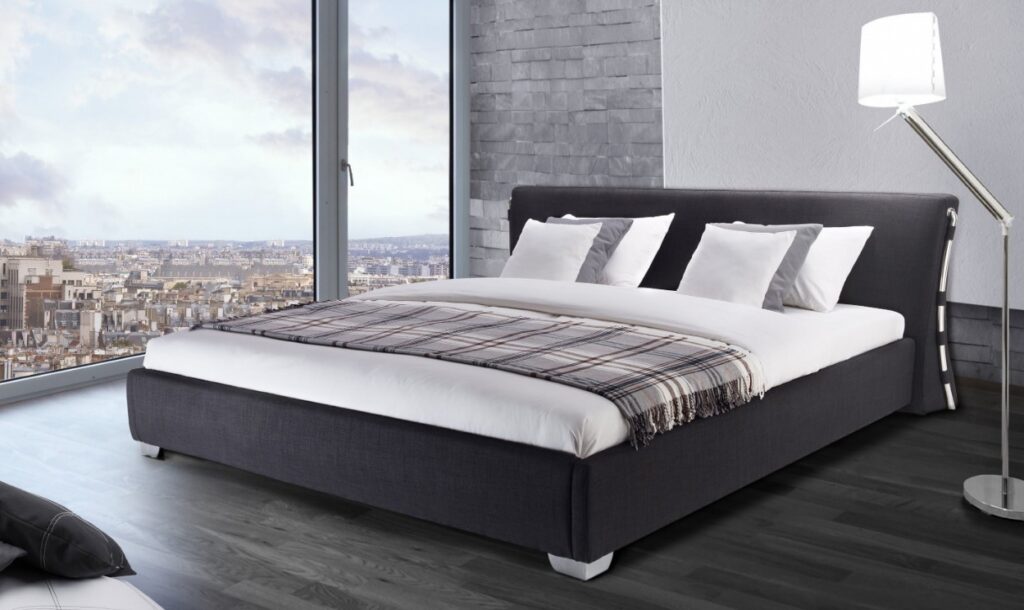The Art Deco style was the epitome of luxury and sophistication during the 1920s. It was characterized by bold geometric shapes, sleek lines, and opulent materials. Art Deco was a reaction to the ornate and elaborate styles of the Victorian era, instead focusing on modern designs and materials. In the living room, you would often find Art Deco furniture made of materials such as chrome, glass, and exotic woods like mahogany and ebony. The style also incorporated bold colors and patterns, making it a popular choice for those looking to make a statement with their 1920s furniture.Art Deco
The Roaring Twenties, also known as the Jazz Age, was a time of great social and cultural change. It was a decade of prosperity and excess, and this was reflected in living room furniture styles. Roaring Twenties furniture was all about luxury and glamour, with a focus on comfort and entertaining. Pieces were often oversized and plush, with rich fabrics like velvet and silk. The style was heavily influenced by the Art Deco movement, with an emphasis on geometric shapes and bold colors.Roaring Twenties
The 1920s also saw the rise of the Modernism movement, which rejected traditional styles in favor of sleek, functional designs. This style was all about simplicity and clean lines, with an emphasis on functionality and practicality. In the living room, you would often find modernist furniture made of materials like steel, glass, and leather. The focus was on creating a minimalist and uncluttered space, with a mix of form and function.Modernism
Streamline Moderne was a popular furniture style in the 1920s that combined elements of Art Deco and Modernism. It was characterized by aerodynamic curves and smooth, streamlined shapes, inspired by the sleek designs of trains, ships, and airplanes. In the living room, you would often find streamline moderne furniture made of materials like chrome, glass, and laminated wood. The style emphasized simplicity and efficiency and was popular among those who embraced the modern and industrial aesthetic.Streamline Moderne
Geometric shapes were a prominent feature of 1920s furniture styles, particularly in the Art Deco and Modernism movements. These shapes, such as circles, squares, and triangles, were used in both the structure of the furniture and in decorative elements. They added a sense of order and symmetry to living room designs and were often featured in bold and striking patterns. Geometric shapes were also used to create a sense of movement and dynamism, reflecting the energy and optimism of the Roaring Twenties.Geometric Shapes
Sleek lines were another defining feature of 1920s furniture styles. This was a departure from the ornate and elaborate styles of the past, with designers instead focusing on clean, straight lines. The living room was seen as a place for relaxation and entertainment, and the furniture reflected this with its simple and uncluttered designs. Sleek lines were also a practical choice as they made furniture easier to clean and maintain, a priority in the fast-paced and modern world of the 1920s.Sleek Lines
The 1920s was a time of indulgence and excess, and this was reflected in the use of luxurious fabrics in living room furniture. Velvet, silk, and satin were all popular choices, adding a touch of opulence and glamour to furniture pieces. These fabrics were often used in bold and vibrant colors, making a statement in the living room. They also added texture and depth to furniture designs, enhancing their visual appeal and creating a sense of comfort and luxury.Luxurious Fabrics
While the 1920s saw a move towards simpler and cleaner designs, there was still a place for ornate details in living room furniture. Art Deco and streamline moderne styles often incorporated intricate and decorative elements, such as etchings, carvings, and inlays. These details added a touch of elegance and sophistication to furniture pieces and were often inspired by nature and ancient cultures. They were also a way to showcase the skill and craftsmanship of the designers and artisans behind the furniture.Ornate Details
The Roaring Twenties was a time of boldness and rebellion, and this was reflected in the use of bold and vibrant colors in living room furniture. Bright reds, blues, yellows, and greens were all popular choices, adding a sense of energy and excitement to furniture pieces. These colors were often used in contrast with neutral or metallic tones, creating a striking and modern look. Bold colors were also a way to express individuality and stand out from the crowd, something that was highly valued during this time.Bold Colors
The 1920s was a time of excess and opulence, and this was reflected in living room furniture styles. Many furniture pieces were designed to make a statement and showcase the wealth and status of their owners. Ornate and intricate designs were popular, with a focus on luxurious materials and attention to detail. Opulent furniture pieces often featured intricate carvings, rich fabrics, and expensive finishes, making them a true symbol of wealth and glamour.Opulent Design
The Influence of 1920s Furniture Styles in the Living Room

Embracing the Art Deco Movement
 The 1920s was a decade of change and innovation, particularly in the world of interior design. One of the most prominent styles of this era was the Art Deco movement, which heavily influenced the design of living room furniture. Art Deco was characterized by its bold, geometric shapes, rich colors, and luxurious materials such as chrome, glass, and lacquer. This style emphasized the idea of modernity and sophistication, making it a popular choice for those looking to elevate their living spaces.
Art Deco Features in Living Room Furniture
Art Deco furniture in the living room often featured clean lines and sleek silhouettes. Sofas and chairs were typically upholstered in rich, luxurious fabrics such as velvet, silk, or leather, and often adorned with decorative cushions in bold patterns. Coffee tables and side tables were made of shiny materials like chrome or glass, adding a touch of glamour to the room. Mirrors and other reflective surfaces were also commonly used in Art Deco living rooms to create a sense of spaciousness and to reflect the bold colors and patterns found in the furniture.
The Influence of Hollywood Glamour
Another key influence on 1920s living room furniture was the rise of Hollywood glamour. As the film industry grew in popularity, so did the desire to emulate the luxurious lifestyles of the stars on the silver screen. This led to the use of opulent materials and intricate details in furniture design, creating a sense of grandeur and extravagance. Velvet, satin, and fur were commonly used in upholstery and cushions, and ornate detailing such as tufting and carving added a touch of elegance to sofas and chairs.
The 1920s was a decade of change and innovation, particularly in the world of interior design. One of the most prominent styles of this era was the Art Deco movement, which heavily influenced the design of living room furniture. Art Deco was characterized by its bold, geometric shapes, rich colors, and luxurious materials such as chrome, glass, and lacquer. This style emphasized the idea of modernity and sophistication, making it a popular choice for those looking to elevate their living spaces.
Art Deco Features in Living Room Furniture
Art Deco furniture in the living room often featured clean lines and sleek silhouettes. Sofas and chairs were typically upholstered in rich, luxurious fabrics such as velvet, silk, or leather, and often adorned with decorative cushions in bold patterns. Coffee tables and side tables were made of shiny materials like chrome or glass, adding a touch of glamour to the room. Mirrors and other reflective surfaces were also commonly used in Art Deco living rooms to create a sense of spaciousness and to reflect the bold colors and patterns found in the furniture.
The Influence of Hollywood Glamour
Another key influence on 1920s living room furniture was the rise of Hollywood glamour. As the film industry grew in popularity, so did the desire to emulate the luxurious lifestyles of the stars on the silver screen. This led to the use of opulent materials and intricate details in furniture design, creating a sense of grandeur and extravagance. Velvet, satin, and fur were commonly used in upholstery and cushions, and ornate detailing such as tufting and carving added a touch of elegance to sofas and chairs.
The Legacy of 1920s Furniture Styles
 The impact of 1920s furniture styles can still be seen in modern living room design. The Art Deco movement laid the foundation for the sleek and sophisticated aesthetic that remains popular today, and Hollywood glamour continues to inspire luxurious and opulent interiors. Incorporating elements of these styles into your living room can add a touch of vintage charm and timeless elegance to your home.
In Conclusion
The 1920s was a decade of innovation and creativity in the world of interior design, and this was particularly evident in the styles of living room furniture. The bold and glamorous Art Deco movement, as well as the influence of Hollywood, left a lasting legacy on furniture design that continues to inspire and influence modern interiors. By incorporating elements of these styles into your living room, you can create a space that is both timeless and elegant.
The impact of 1920s furniture styles can still be seen in modern living room design. The Art Deco movement laid the foundation for the sleek and sophisticated aesthetic that remains popular today, and Hollywood glamour continues to inspire luxurious and opulent interiors. Incorporating elements of these styles into your living room can add a touch of vintage charm and timeless elegance to your home.
In Conclusion
The 1920s was a decade of innovation and creativity in the world of interior design, and this was particularly evident in the styles of living room furniture. The bold and glamorous Art Deco movement, as well as the influence of Hollywood, left a lasting legacy on furniture design that continues to inspire and influence modern interiors. By incorporating elements of these styles into your living room, you can create a space that is both timeless and elegant.
